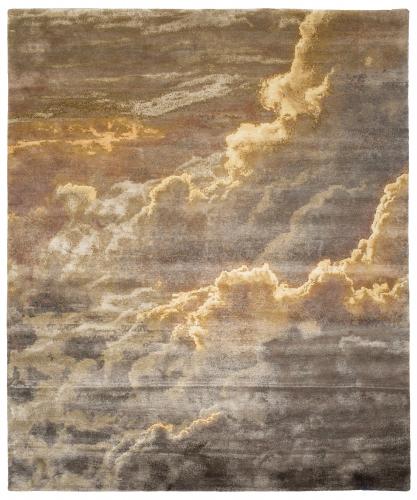

This object is eligible for a Certificate of BADA Provenance
The BADA Standard
- Since 1918, BADA has been the leading association for the antiques and fine art trade
- Members are elected for their knowledge, integrity and quality of stock
- Our clients are protected by BADA’s code of conduct
- Our dealers’ membership is reviewed and renewed annually
- Bada.org is a non-profit site: clients deal directly with members and they pay no hidden fees
This nim suzani (half-size suzani) was made in the second half of the 19th century, possibly in Kermina east of Bokhara, Uzbekistan. The term suzani is derived from Farsi suzan meaning "needle", and by implication is applied in Farsi to all types of needlework. The more specific use of the term, i.e. for Uzbek silk embroideries, is the one that is now generally referred to.
Like almost all suzani, it was made by the bride and other female members of her family as part of her dowry, to be used and displayed on her wedding day. It is therefore justified to call these magnificent embroideries "women's art" (the term "folk art" has also been used). Since weddings were important events in socio-economic terms, the quality of the dowry pieces was significant, not only as proof of the bride's skills but also as markers denoting the relative importance and wealth of the bride's family, so great effort was put into their production. Suzani are usually made in several pieces (four panels of 26 cm width each in this example). Loosely assembled, a master draftswoman, or kalamkash, does a free hand drawing of the design on the ground material, which is subsequently dis-assembled for the panels to be embroidered separately. After the completion of the embroidery, the panels then get re-assembled, a process which accounts for the frequent mis-matches along the seams.
The main border in our nim suzani has ten large circular poppy blossoms linked by a vine which also surrounds each blossom. It is flanked by two minor borders with a meandering vine and flower heads. The field is almost completely filled by a tree of life with three pairs of fan shaped blossoms and an individual blossom at the top, plus a multitude of secondary flower heads scattered between the vines. The embroidery is worked in a variety of stitches, including chain stitch, on a fairly coarse cotton foundation. According to Jakob Taube, this was typical up until the end of the 1880s (Ignazio Vok, Vok Collection. Suzani. A Textile Art from Central Asia. Edition Vok, München, 1994, p.10).
The edges of our nim suzani are backed by original ikat fabric, which is attached to original Russian cotton backing.
A full size suzani in the Vok Collection has a very similar border design, coupled with the same feel of an almost flamboyant vitality. It is attributed to Kermina in the catalogue of the Rippon Boswell catalogue of the Vok Collection, Selection One (Katalog 86, Wiesbaden 2015, lot 42).
Very good condition
Dimensions
169 x 105 cmCondition report
Very good condition. Original cotton backing and silk ikat bias bindingStock number
6857The BADA Standard
- Since 1918, BADA has been the leading association for the antiques and fine art trade
- Members are elected for their knowledge, integrity and quality of stock
- Our clients are protected by BADA’s code of conduct
- Our dealers’ membership is reviewed and renewed annually
- Bada.org is a non-profit site: clients deal directly with members and they pay no hidden fees



